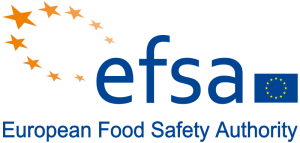Novel and Traditional Food Guidance Finalised

EFSA has published two guidance documents on novel food and traditional food from third countries to help ensure that these foods are safe before risk managers decide whether they can be marketed in Europe. EFSA developed the guidance following the adoption of the new European regulation on novel food in November 2015. The regulation, which replaces the previous one from 1997 and comes into effect in January 2018, introduces a centralised assessment and authorisation procedure. EU risk managers will decide on the market authorization of novel foods and may ask EFSA to conduct a scientific risk assessment to confirm their safety.
What are novel and traditional foods?
Novel food refers to food that European citizens have not consumed to a significant degree prior to May 1997. It includes food from new sources (e.g. oil rich in omega-3 fatty acids from krill), food obtained through the application of new technologies (e.g. nanotechnology) or by using new substances (e.g. phytosterols or plant sterols).
 Traditional food is a subset of novel food. The term relates to food traditionally consumed in countries outside the EU. It includes foods made from plants, microorganisms, fungi, algae and animals (e.g. chia seeds, baobab fruit, insects, water chestnuts).
Traditional food is a subset of novel food. The term relates to food traditionally consumed in countries outside the EU. It includes foods made from plants, microorganisms, fungi, algae and animals (e.g. chia seeds, baobab fruit, insects, water chestnuts).
Guidance on requirements
The new guidance documents explain in detail the kind of information applicants need to provide for risk assessment. They also clarify how to present this information before EFSA can assess the safety of the novel or traditional food.
Applicants submitting novel food applications need to present data describing the product. Dossiers should include data on the compositional, nutritional, toxicological and allergenic properties of the novel food as well as information relating to the production process, and the proposed uses and use levels.
EFSA addresses traditional food from third countries (non-EU countries) in a separate guidance document. Applicants need to present evidence of safe use of the traditional food in at least one country outside of the EU for a period of at least 25 years. EFSA and Member States will assess the evidence in parallel procedures.
Engaging stakeholders
EFSA involved stakeholders closely when developing the guidance. In addition to a two-month public consultation, stakeholders had the opportunity to give feedback on the drafts at a meeting in Brussels.

































